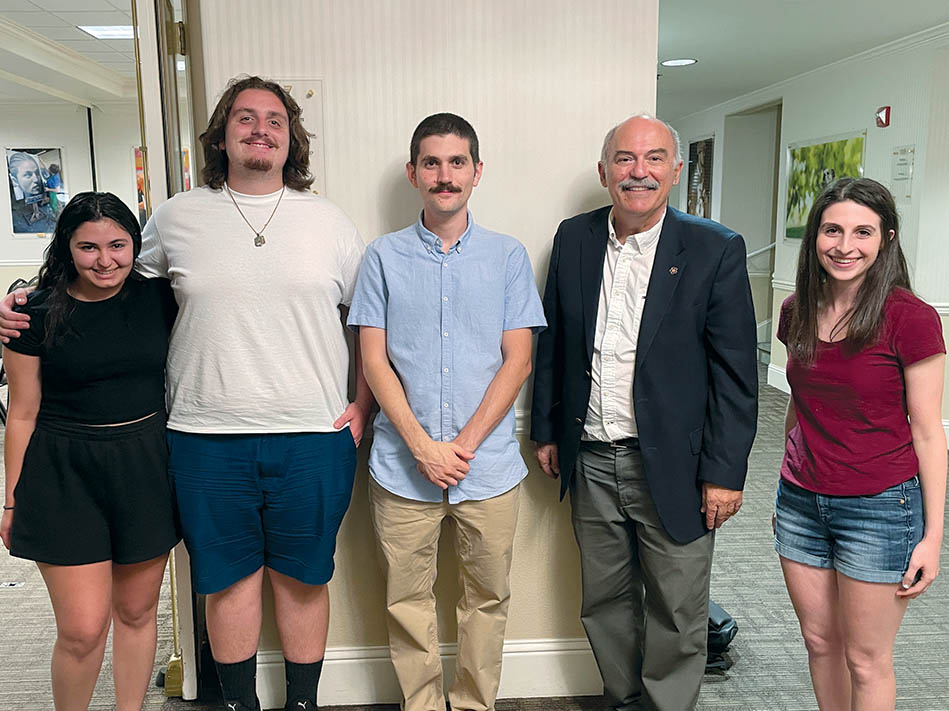
Photo: Andrew Hagopian
Carina Tokatian
Staff Writer
When discussing the relation-ship between being Armenian and Christian, an Armenian priest living in modern-day Turkey told Dr. Hrag Papazian, “As the apostle Paul has taught us, we cannot separate the body from the soul. In an identical way, we cannot separate Armenianness from Christianity. Armenianness is the body, Christianity is the soul. They form an indivisible unity.” In essence, this priest raises an important existential question: what does it mean to be an Armenian?
On Friday, September 9, the Armenian Studies Program hosted the first of a three-part lecture series presented by Dr. Papazian. The theme of his series is “Armenians and ‘Other Armenians’ in Contemporary Turkey.” Dr. Papazian is the 19th Kazan Visiting Professor in Armenian Studies at Fresno State. Prior to this position, he studied at the University of Oxford, receiving his doctoral degree in anthropology. Among his recognitions and honors, Dr. Papazian received the David Parkin Prize for his dissertation and he also received honorary mention for his thesis from the Society for Armenian Studies Distinguished Dissertation Award competition.
Concentrating on Armenians in contemporary Turkey, his first lecture concerned “The Christian Armenian Community.” Dr. Papazian began with a fictional graphic, drawn by his wife Nooneh Khoodaverdyan, that follows a dialogue between three Armenians living in contemporary Turkey: a native Christian-Armenian, a native Muslim-Armenian, and a migrant from the Republic of Armenia. Noting the tension that occurs in their conversation, he revealed how his intention for his lecture series is to “explain this clash of different Armeniannesses and where this comes from.”
The crystallization of Christian Armenians’ ethnoreligious identity can be traced back to the Treaty of Lausanne.
Following World War I, this treaty provided for the founding of the new Turkish Republic, establishing rights and protections for Armenians and other religious minorities.
Yet, as Dr. Papazian emphasized, the mention of “minorities” in the treaty’s protections “is always preceded by the word ‘non-Muslim.’”
In other words, Armenians were only seen as “minorities” in religious terms, and thus were grouped by religion rather than ethnicity. As Dr. Papazian noted, even the religion listed on their identification cards was often “Armenian” in early Republican times.
Being categorized on the basis of their religious difference, Armenians were discriminated against for being non-Muslims.
For instance, Dr. Papazian mentioned how Armenians served in a special battalion for non-Muslims during World War II where they were exploited and forced to work on roads under harsh working conditions. The Property Tax of 1942 was another form of discrimination as non-Muslims were forced to pay higher rates than Muslims.
Dr. Papazian also mentioned how in the Armenian schools in Turkey, Armenian history is to this day not allowed to be taught. Only Armenian religion and language can be addressed, whereas general history must follow the Turkish national curriculum and must be taught by an ethnic Turk. This history course does not cover the history of Armenians and other minorities, nor of course the Armenian Genocide. On the contrary, it even portrays Armenians in a negative manner.
Considering the censorship of their Armenianness beyond the religious sphere, Dr. Papazian highlighted how Armenian natives of Turkey “experience Christianity and Armenianness always in tandem, one comes with the other. The main channel through which Armenianness is maintained and flows to them is the institution of the Church, the Armenian Church, around which all other community groups are organized.” The Church is often the place where children are asked to enact their “Armenianness.”
For instance, Dr. Papazian observed a child being told to speak Armenian in the church because “we should speak Armenian here.” Moreover, the Church is the place where even when non-Armenians are (in exceptional cases) baptized they are told that they “hay oldu,” meaning “he/she became Armenian” (as opposed to simply becoming Christian). Thus, for an Armenian native sheltered from more ethnic and historical dimensions of their identity, Armenianness is embodied through the Church.
Manifestations of Armenianness are not just suppressed externally, however. Dr. Papazian explained the ways in which some Armenians themselves work towards invisibility by remaining secluded in Armenian community spaces, giving their children Turkish names, speaking in Turkish instead of Armenian, and even performing Turkish acts of nationalism, such as displaying the Turkish flag on their balconies as a self-defense mechanism. Nevertheless, there are some Armenians living in contemporary Turkey who are pushing the limits and raising awareness of their history and rights, including through an Armenian political group known as “Nor Zartonk.”
As Dr. Papazian concluded, Armenians pushing the limits in Turkey today are standing up and saying, “No, we’re not simply a cemaat [congregation]. We’re not simply a mezhep [religious sect]. We’re not a denomination. We’re not a particular religious community. We are more than that. Calling us strictly a religious community is in and of itself a form of oppression. We are an ethnic-national group with our own ethnic national history, and we are proud of that.”
Dr. Papazian will elaborate more on this theme as he covers “Muslim and Alevi Armenians” of contemporary Turkey in his next lecture on Friday, October 7. His third lecture will cover “The Migrant Armenians in Turkey.”
 Hye Sharzhoom Armenian Action
Hye Sharzhoom Armenian Action